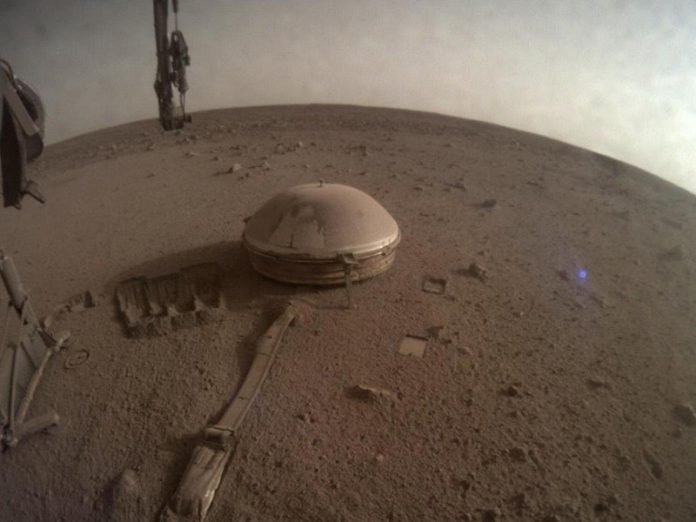
Scientists from Penn State University have found an exciting new way to search for water deep below the surface of Mars.
Instead of using traditional Earth methods, which don’t work well on Mars, they suggest listening to “marsquakes”—the Martian equivalent of earthquakes.
These quakes could reveal the presence of underground water by producing unique electromagnetic signals as they pass through aquifers, according to a recent study published in the Journal of Geophysical Research: Planets.
Nolan Roth, a doctoral candidate in the Department of Geosciences at Penn State and the study’s lead author, explains that while scientists believe Mars once had oceans, most of its water has disappeared over time.
However, some water might still be trapped underground. “If we can detect these electromagnetic signals from marsquakes, we can find water on Mars,” Roth said.
On Earth, finding underground water can be done using ground-penetrating radar, but this technology isn’t effective for detecting water miles beneath Mars’s surface.
Instead, the researchers propose using the seismoelectric method, a newer technique that helps scientists understand Earth’s subsurface without drilling.
When seismic waves from a quake travel through an underground aquifer, the difference in how rocks and water move creates electromagnetic fields.
Sensors on the surface can pick up these signals, providing information about the aquifer’s depth, size, location, and even its chemical makeup.
“If we listen to the marsquakes passing through the subsurface, they will create these unique electromagnetic signals if they go through water,” Roth said. “These signals would indicate the presence of water on Mars today.”
This method is especially promising for Mars because the planet’s dry surface naturally reduces background noise, making it easier to detect the signals from aquifers.
On Earth, the presence of water outside of aquifers can create additional electric signals that complicate the process. But Mars’s dry conditions help remove this noise, allowing scientists to focus on the useful data.
The researchers built a model of Mars’s subsurface and added aquifers to test how well the seismoelectric method would work.
They found that the technique could successfully analyze the properties of these aquifers, such as their thickness and salinity.
“If we can understand the signals, we can go back and study the aquifers themselves,” Roth said. “This would give us more information than ever before about water on Mars and how it has changed over the last 4 billion years. It’s a big step forward.”
Future work will involve analyzing data already collected by NASA’s InSight lander, which arrived on Mars in 2018.
The lander has been using a seismometer to listen to marsquakes and map the subsurface, but it also has a magnetometer. By combining data from both instruments, scientists hope to detect seismoelectric signals indicating the presence of water.
Sending a dedicated magnetometer on future NASA missions could improve the results even more. This technique could also be used on other planets and moons. For example, it could measure the thickness of icy oceans on Jupiter’s moons.
“This method has great potential for planetary geophysics,” said Tieyuan Zhu, an associate professor of geosciences at Penn State and Roth’s adviser. “It could help us understand more about Mars and other celestial bodies.”
Yongxin Gao, a professor at Hefei University of Technology in China, also contributed to the study.
By using marsquakes and the seismoelectric method, scientists are opening up new possibilities for exploring the hidden depths of Mars and potentially discovering water, which is crucial for understanding the planet’s history and future possibilities for life.



